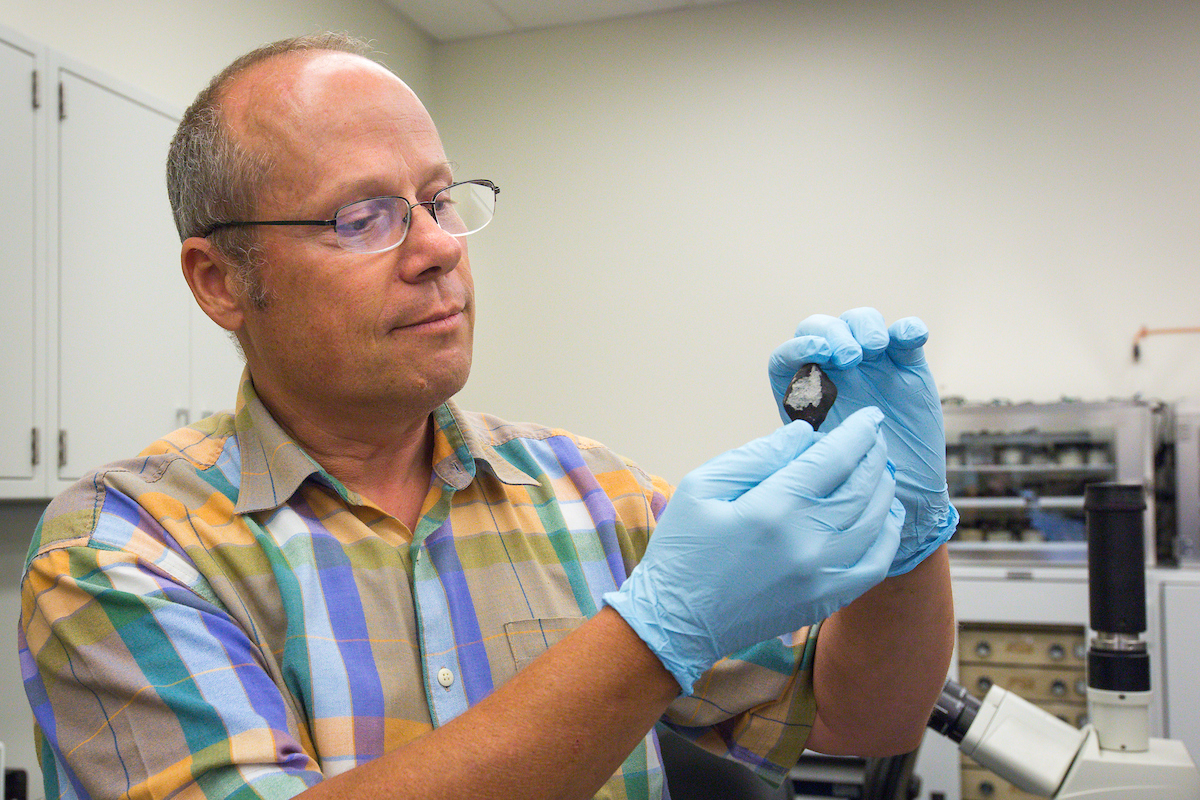ASU, NASA project zooms in on the structure of meteorites
Researchers in ASU's Ira A. Fulton Schools of Engineering, School of Earth and Space Exploration seek to understand macroscopic characteristics of space rocks that fall to Earth
This story was written by Monica Williams, and originally published by ASU News January 17, 2023.
They can often be seen in the night sky as quick streaks of light. This flashy display signals their vaporization as they speed and heat up in the Earth’s atmosphere. Some people call them shooting stars, but they actually have two other names: meteors and meteorites — all depending on whether enough remains of them reach the ground.
Meteors and meteorites are pieces of asteroids. If they burn up completely on entry into Earth’s atmosphere, they’re called meteors. If they fall to the ground, they’re known as meteorites.
Over the past several decades, a growing number of meteorites have accumulated on the Earth’s surface, making them a focus for researchers around the world, including at Arizona State University. Even researchers without a traditional background in meteoritics or geochemistry are interested in studying them.
“I have no problem admitting that I knew absolutely nothing about meteorites,” says Christian Hoover, an assistant professor of civil engineering in the School of Sustainable Engineering and the Built Environment, part of the Ira A. Fulton Schools of Engineering at ASU. “I knew that I worked on cement and on gas shales. They’re both comprised of many smaller material ingredients that spread across different length scales, just like I’ve since learned meteorites to be.”
Hoover’s research is focused on small-scale mechanics. He views materials at microscopic levels to learn more about their characteristics and answer questions such as why a material may behave a certain way when it is alone and acts in other ways when mixed with other materials.
Hoover says he was intrigued by the idea of applying his knowledge to a new area of study — in this case, the study of meteorites. That curiosity set the stage for him to be the lead investigator in a three-year collaboration with Laurence Garvie, a research professor in ASU’s Buseck Center for Meteorite Studies, or BCMS; Erik Asphaug, a professor in the Lunar and Planetary Laboratory at the University of Arizona; and Desiree Cotto-Figueroa, an associate professor in the Department of Physics and Electronics at the University of Puerto Rico at Humacao.

This story was written by Monica Williams, and originally published by ASU News January 17, 2023.